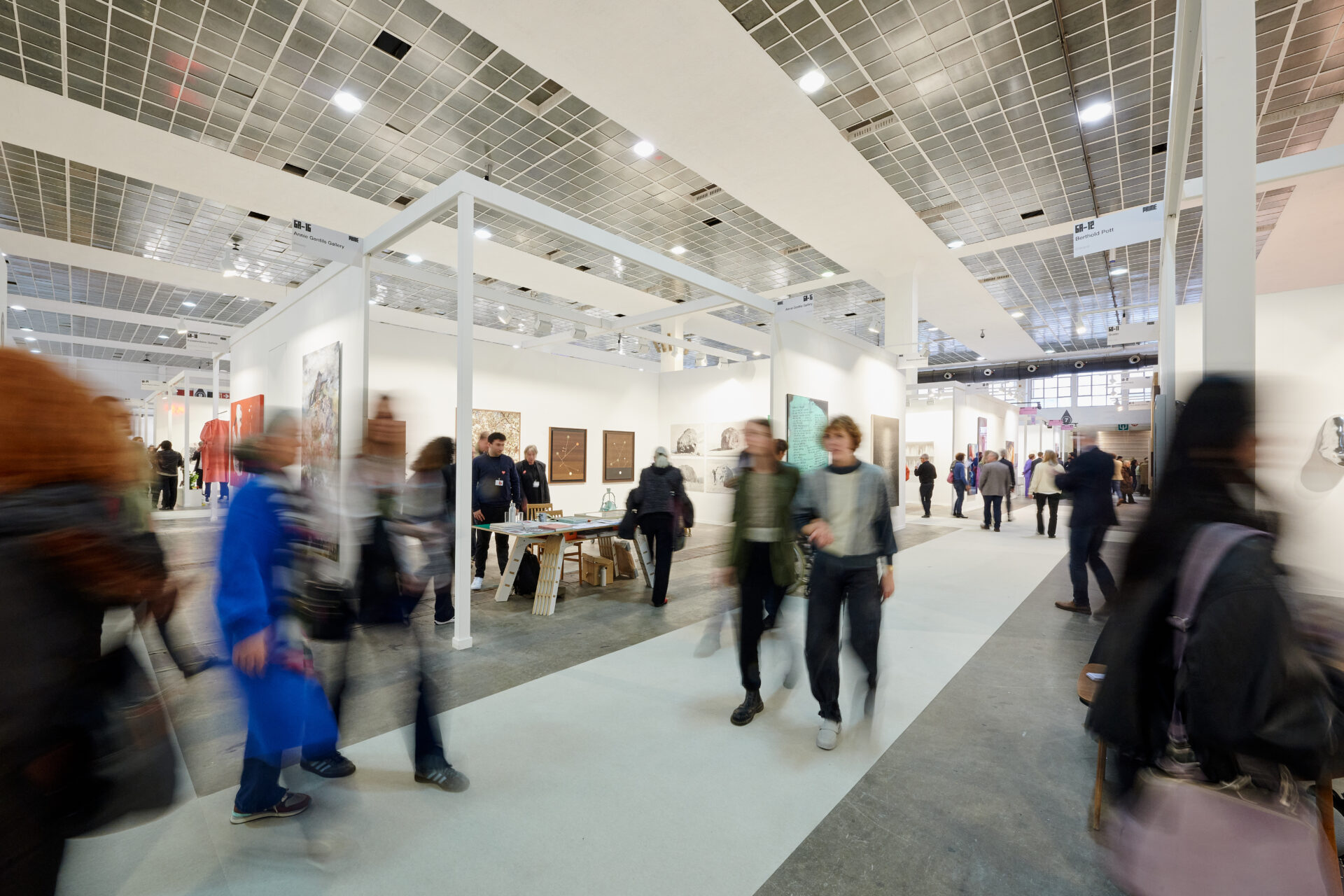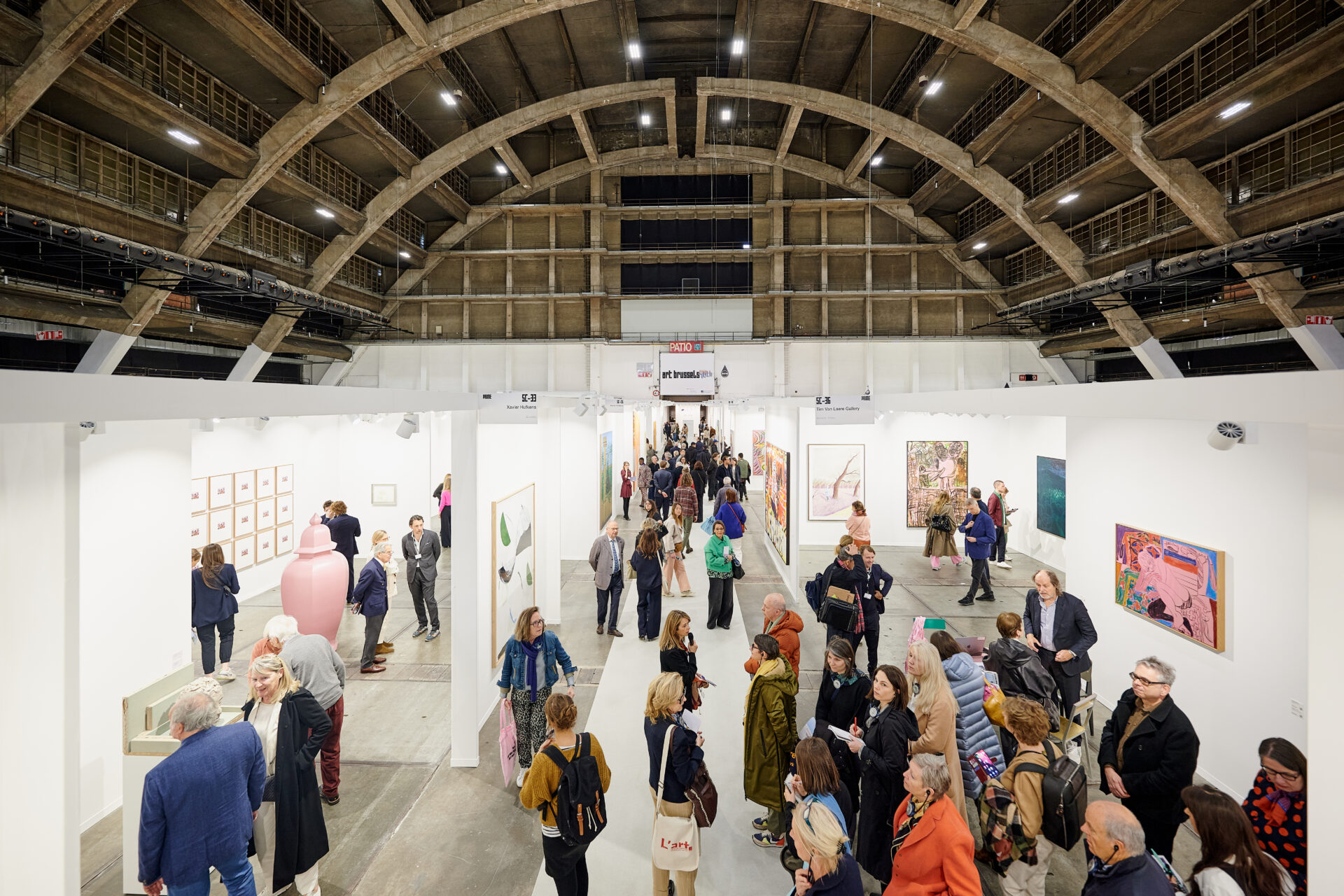main partner

History of the fair
The fair was founded in 1968 by the Association of Galleries based in Brussels and carried the name “Foire d’Art Actuel / Actuele Kunstmarkt”. In the beginning, the event was biennial, local and organised in various smaller venues all over Belgium. Princess Paola visited the fair several times. As from 1997, when Artexis (now named Easyfairs) took over the fair, it became Art Brussels, a yearly not to be missed rendez-vous for the entire international art community, organised at Brussels Expo. From 2016 till 2022, Art Brussels has been held at Tour & Taxis. In 2023, Art Brussels moved back to Brussels Expo, in the most emblematic halls of the venue.
Art Brussels is deeply grateful for the ongoing support from the expansive community of art enthusiasts across Europe. The success of Art Brussels is underpinned by Belgium’s reputation of having the highest number of art collectors per capita globally, fostering a dynamic artistic landscape with top-quality galleries and artists supported by a large amount of art lovers.

Art Brussels’ 5 sections
Retaining its youthful profile as a discovery fair, Art Brussels brings together each year more than 160 contemporary art galleries among the most important of the international scene, gathered in five sections.
The Prime section includes galleries showcasing top-tier modern and contemporary works. The Solo section highlights presentations dedicated to the work of individual artists, offering an in-depth focus on their practices. ’68 Forward is a new section gathering galleries that celebrates the diversity, experimentation, and boundary-pushing movements that have defined contemporary art since Art Brussels’ founding year in 1968. This section offers a platform for both recognized pioneers and overlooked talents.
In the Discovery section, galleries champion emerging international artists, focusing on single-artist presentations or compelling dialogues between two under-recognized creators whose work constitutes a true ‘discovery’ for European collectors. Finally, the Invited section welcomes galleries—newcomers to Art Brussels who stand out for their ambition, innovative programming, and, in some cases, for challenging traditional gallery models. These participants enjoy complete freedom in curating their booths, promising fresh and unexpected perspectives.

Brussels: One of Europe’s Contemporary Art Capitals
Brussels has firmly established itself as one of Europe’s leading hubs for contemporary art. It’s a city that pulses with creative energy—subtle yet unstoppable. Nestled between the cultural giants of London and Paris, Brussels humbly carves out its own identity as a playground for artists and thinkers. Here, the avant-garde thrives alongside rich history, from its buzzing galleries and experimental spaces to its renowned museums. It’s a city where the boundaries between disciplines blur, where young artists still find room to live and create, and where art is never far from the street, the bar, or the conversation.
Art Brussels has been a driving force in this transformation, amplifying the city’s artistic treasures and bolstering its international reputation. For over 50 years, the fair has acted as a vibrant meeting point for global galleries, artists, curators, and collectors, solidifying Brussels’ role as a vital hub in the international art scene.
Belgium is also known for having the highest concentration of art collectors per square meter in the world, and Belgian collectors are renowned for their expertise and connoisseurship. The acquisition process here is rooted in research, with collectors like Frederic de Goldschmidt and Walter Vanhaerents not only building exceptional private collections but also feeling the strong urge to share their holdings with the public (Cloud Seven and Vanhaerents Art Collection).
During the fair, major art institutions in Brussels contribute to this momentum with a compelling lineup of exhibitions.
